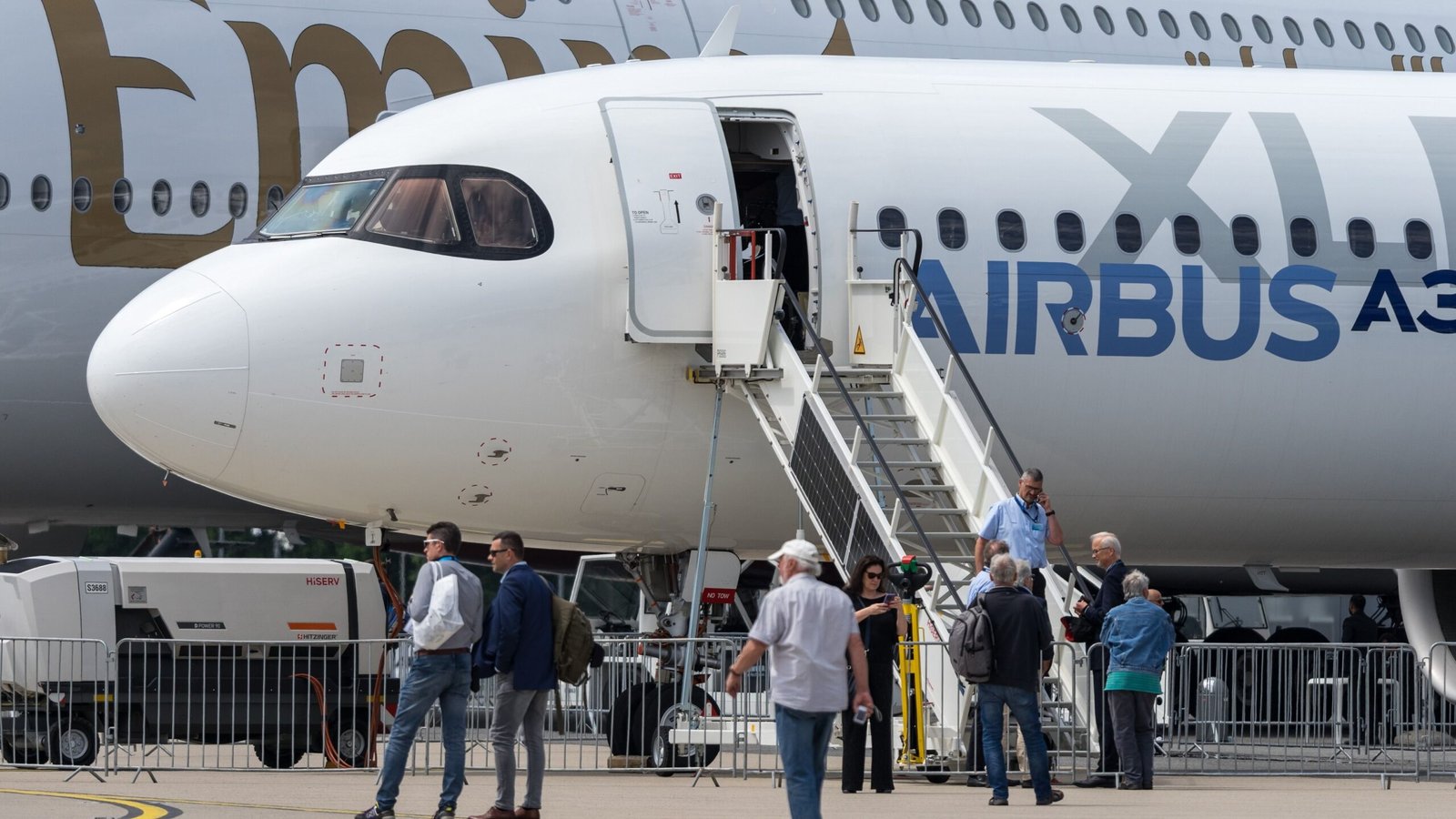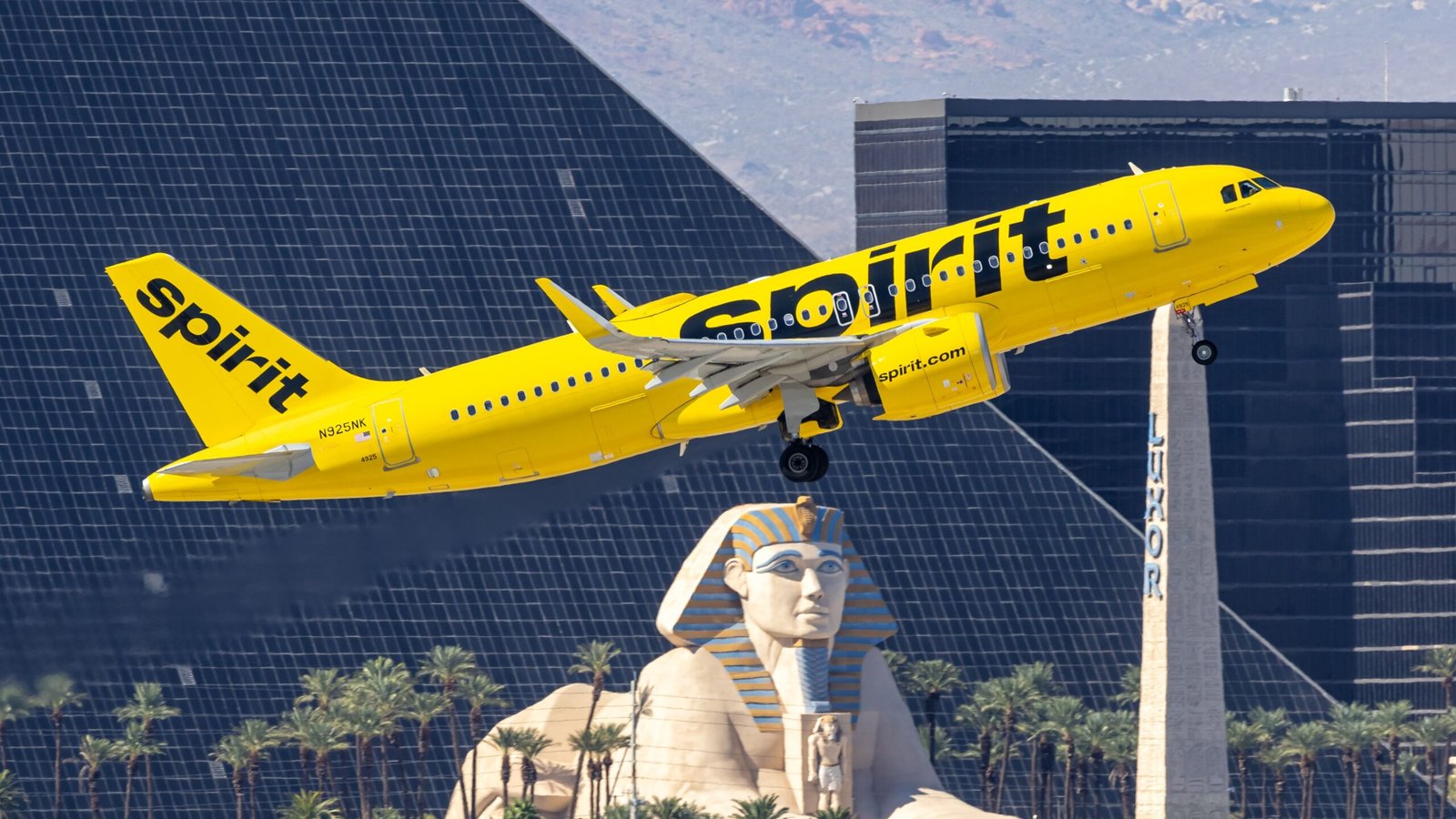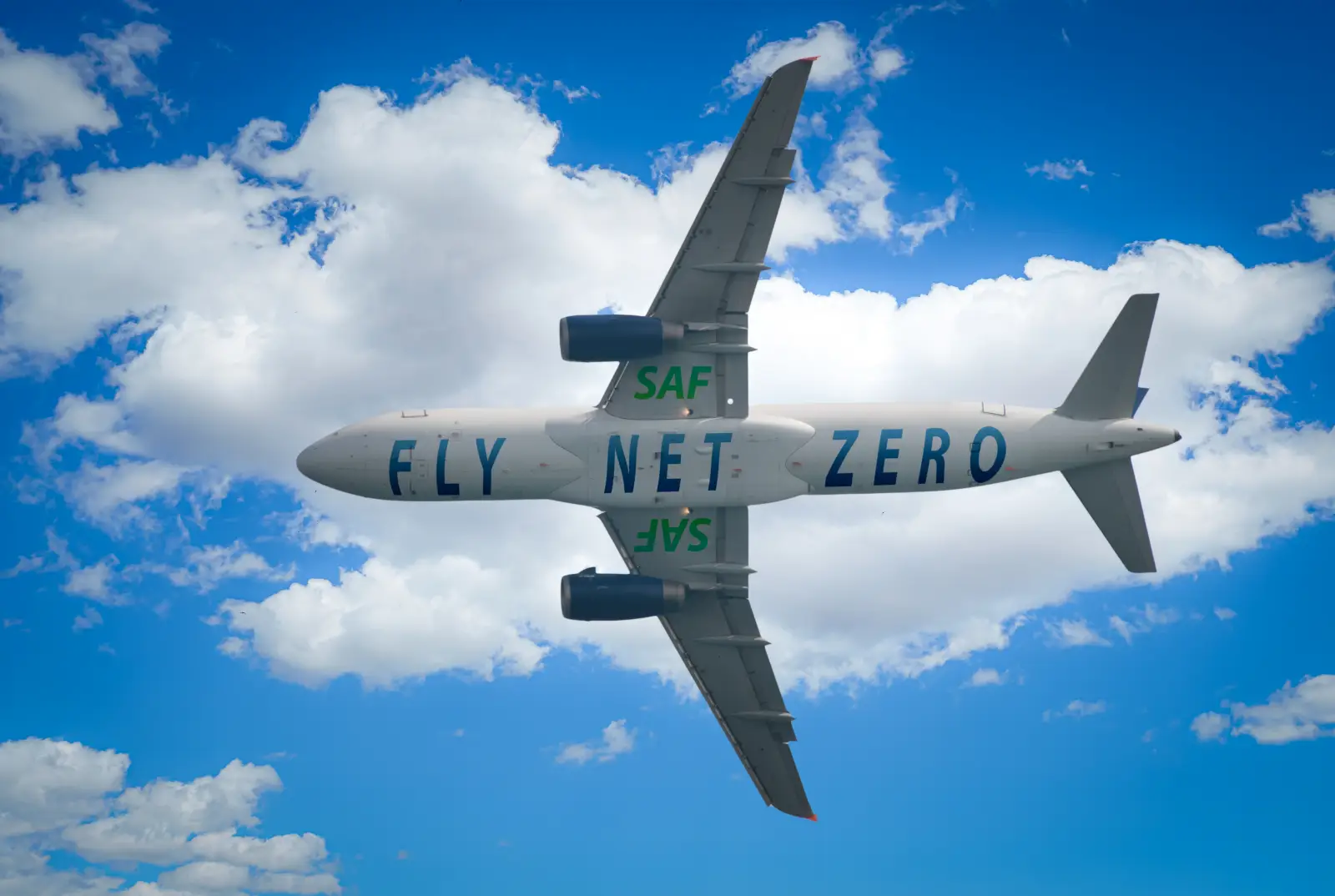Flight Buzz
United Airlines’ 1st Airbus A321XLR Delivery Is Delayed Again

United Airlines will not receive its first Airbus A321XLR delivery until the summer of 2026, according to the airline’s earnings call on June 17, 2025. United Airlines has 50 A321XLR aircraft on order.
The Chicago-based carrier had previously planned to begin receiving deliveries in January 2026. However, the timeline has once again been pushed back by at least six months, most likely due to supply chain issues. United Airlines did not specify why the delays continue to persist.
Deliveries In The Summer of 2026
During United Airlines’ earnings call on June 17, Executive Vice President and Chief Financial Officer (CFO) Michael (Mike) Leskinen responded to a question about whether any A321XLR deliveries would occur this year, stating simply, “none this year.” Chief Commercial Officer Andrew Nocella added that the aircraft are now expected to arrive “in the summer of 2026,” without specifying the exact month.
United Airlines placed an order for 50 Airbus A321XLR narrowbody aircraft in 2019, aiming to modernize its fleet by replacing aging Boeing 757-200s and to support an expansion of transatlantic service from key US hubs, including Newark/New York and Washington, DC.
Deliveries were originally expected to begin in 2024, with transatlantic operations planned to launch in 2025. However, the A321XLR program faced delays due to regulatory concerns and design modifications required by aviation regulators. The European Union Aviation Safety Agency (EASA) raised fire safety concerns about the rear center tank (RCT), particularly regarding fuel tank crashworthiness and protection from fire in the event of a landing gear failure or fuselage breach.
Other US Orders For The A321XLR
United Airlines is not the only US carrier with Airbus A321XLRs on order, American Airlines and JetBlue Airways have also committed to the aircraft. Like United, American placed an order for 50 A321XLRs back in 2019.
In March 2025, the first Airbus A321XLR destined for American completed its maiden flight at Airbus’ facility in Hamburg-Finkenwerder, Germany. The airline had planned to take delivery of the aircraft, registered as N300NY, in the first half of 2025, according to media reports. However, that delivery has not yet taken place.
|
US Airlines With A321XLR Orders |
Number Of Units On Order |
Currently Anticipated Delivery Date |
|---|---|---|
|
United Airlines |
50 |
Summer 2026 |
|
American Airlines |
50 |
2025 |
|
JetBlue Airways |
13 |
Autumn 2025 |
Meanwhile, JetBlue ordered 13 Airbus A321XLRs by converting 13 existing A321neo orders in June 2019. According to a December 2024 report by FlightGlobal, the airline expects to receive its first A321XLR in the autumn of 2025. However, the exact delivery date remains uncertain, and the timeline could be pushed back further. Simple Flying has asked JetBlue and American Airlines for comment.
Related
Icelandair Says The Airbus A321XLR “Can Do More” Than The Boeing 757
Interestingly, the words were spoken by an Icelandair senior manager and 757/767 pilot.
Frontier Airlines Backed Out Of A321XLR Commitment
The Denver-based airline’s interest in the A321XLR came about in June 2019 when it announced that its existing order for 18 A320neos would be converted to 18 A321XLRs. However, in 2024, Frontier Airlines announced that it had canceled its plans to acquire the highly anticipated Airbus A321XLR.
However, cost-saving measures and the A321XLR not quite living up to its expectations have persuaded Frontier to drop the narrowbody jet entirely. It has since doubled down on the Airbus A321neo narrowbodies, converting nearly 20 orders that were originally for the slightly smaller A320neo. At present, Frontier Airlines has a total of 153 A321neos on order, as per ch-aviation data.
- Length
-
146 ft 0 in (44.5 m)
- Wingspan
-
117 ft 5 in (35.8 m)
- Height
-
38 ft 7 in (11.8 m)
- Engine Options
-
CFM International LEAP-1A, Pratt & Whitney PW1100G-JM
- Range
-
4,693 NM (8,693 km)
It is worth noting that only four operators worldwide have received the A321XLR, including Iberia, Aer Lingus, Wizz Air (the first airline to receive the PW-powered A321XLR), and Qantas.
Flight Buzz
These Are The Most Affected US Airlines By Pratt & Whitney Engine Groundings Today

Pratt & Whitney has recalled a significant number of its PW1000G geared turbofan (GTF) engines due to a manufacturing defect affecting certain high-pressure turbine and compressor components. This has led to the grounding of numerous aircraft, including models from the Airbus A320neo family, A220, and Embraer E-Jet E2, that are powered by these engines.
Simple Flying examines which US airlines are most affected by the issues of Pratt & Whitney PW1000G engines today. Data from ch-aviation shows that out of 664 aircraft in the United States powered by the PW1000 series engines, 64 are currently listed as stored or undergoing maintenance.
Spirit Airlines Faces The Largest Impact
It is important to note that ch-aviation does not specify the reasons why these aircraft are in storage. However, it is likely that many have been taken out of service for engine maintenance, particularly in connection with the GTF recall, though some may be grounded for other reasons.
According to the data, 64 aircraft powered by PW1000-series engines are currently listed as stored or undergoing maintenance. The impact spans seven airlines and one private operator, with Spirit Airlines being the most affected. Of Spirit’s Airbus A320neo fleet, 39 aircraft are grounded, while the remaining 52 are still in active service. Spirit Airlines has voiced its frustration over the groundings of its GTF-powered fleet.
Recently, however, the airline extended its agreement with Pratt & Whitney to help offset the financial impact of grounding its Airbus A320neo aircraft, which use PW1100G engines. Under the updated deal, Spirit will receive an additional $150 million to $195 million in liquidity in 2025, similar to the support it received in 2024. The budget airline previously stated that issues related to the GTF engines, including accelerated removals and inspections, are expected to continue through 2026.
Seven Airlines, One Private Operator Affected
In addition to Spirit Airlines, six other carriers and one private operator have grounded several GTF-powered aircraft, according to ch-aviation. JetBlue Airways and Delta Air Lines appear to be similarly affected.
The data shows that JetBlue currently has five Airbus A321neos and four Airbus A220-300s in storage. Delta Air Lines has also grounded a comparable number, with four Airbus A321neos and four Airbus A220-300s listed as stored. Other affected airlines with GTF-powered aircraft marked as stored, undergoing maintenance, or under repair include Frontier Airlines, United Airlines, Hawaiian Airlines, and Breeze Airways.
|
Airline |
Number Of Aircraft Stored/Grounded |
|---|---|
|
Breeze Airways |
1 Airbus A220-300 |
|
Delta Air Lines |
4 A321neos and 4 A220-300s |
|
Frontier Airlines |
4 Airbus A321neos |
|
Hawaiian Airlines |
1 Airbus A321neo |
|
JetBlue Airways |
5 Airbus A321neos and 4 A220-300s |
|
Spirit Airlines |
39 Airbus A320neos |
|
United Airlines |
1 Airbus A321neo |
FlightGlobal reports that while the total number of commercial aircraft grounded due to Pratt & Whitney’s recall of PW1000-series engines has seen a slight decrease in recent months, the proportion of grounded jets has stayed nearly constant, hovering around 30% of the fleet.
Related
Pratt & Whitney Looks Toward New Technologies To Improve GTF Engine Durability
Pratt & Whitney is bracing itself for more compensation payouts in 2025 for ongoing GTF issues
Problems Affecting PW1000G Engines
The Pratt & Whitney PW1000G engines are facing challenges due to a manufacturing defect involving contaminated powdered metal in high-pressure turbine and compressor components. This issue has led to widespread inspections and repairs, grounding hundreds of aircraft and causing significant operational disruptions expected to continue through 2026.
Engines operating in harsh environments like hot, humid, or sandy regions have experienced accelerated wear, leading to more frequent maintenance and unscheduled removals. Pratt & Whitney’s maintenance network is under strain, working to expand capacity to handle the backlog of repairs and reduce aircraft downtime.
- Business Type
-
Engine Maker
- Date Founded
-
January 1, 1925
- CEO
-
Christopher Calio
- Headquarters Location
-
East Hartford, United States
These problems have caused financial strain on airlines, with some reporting significant profit drops due to grounded fleets. Additionally, recent strikes by Pratt & Whitney workers have further delayed production and repairs, extending the timeline for full recovery, which is anticipated in the coming years.
Flight Buzz
U.S.-Mexico Aviation Tensions and the Reconfiguration of Cross-Border Airline Partnerships: A Strategic Investment Analysis

The U.S.-Mexico aviation landscape has entered a period of profound transformation. Regulatory shifts, geopolitical tensions, and the unraveling of long-standing airline partnerships—most notably the Delta-Aeroméxico joint venture—have created a volatile environment for investors. As the U.S. Department of Transportation (DOT) enforces stricter oversight of cross-border operations, airlines and investors must navigate a complex web of risks and opportunities.
Regulatory Shifts and the Fragmentation of Joint Ventures
The DOT’s 2023 decision to revoke antitrust immunity for the Delta-Aeroméxico partnership marked a turning point. Citing Mexico’s airport capacity restrictions—particularly the forced relocation of cargo operations from Mexico City International Airport (MEX) to the underdeveloped Felipe Ángeles International Airport (NLU)—the U.S. government argued that these actions violated the 2015 U.S.-Mexico Air Transport Agreement. This move, aligned with the Trump administration’s “America First” agenda, has forced the joint venture into a wind-down by October 2024, fragmenting a once-integrated transborder network.
For Delta Air Lines (DAL), the loss of Aeroméxico’s 15% stake in Volaris—a key regional competitor—has complicated its dominance in the Mexican market. Meanwhile, Aeroméxico (AEROMEX.MX) faces a dual challenge: diminished U.S. connectivity and rising competition from low-cost carriers like Volaris and VivaAerobus. The airline’s 30-day stock win rate of 42.86% in 2025 reflects market uncertainty, though historical data suggests potential for recovery.
Financial Implications and Currency Volatility
The Mexican peso’s depreciation against the U.S. dollar has exacerbated financial risks for both airlines. Delta’s 2025 quarterly report shows resilience, with $16.6 billion in operating revenue and a 12.6% operating margin, but its long-term exposure to currency fluctuations remains a concern. Aeroméxico, which relies on U.S.-sourced aircraft parts and crew expenses, has seen costs rise by 15–20% since 2023.
Volaris, meanwhile, has capitalized on the shifting dynamics. The low-cost carrier transported 10.77 million passengers in the first half of 2025—a 8.2% year-over-year increase—by expanding its route network and leveraging Aeroméxico’s weakened U.S. connectivity. For investors, Volaris’ 3.1% international passenger growth underscores its potential as a long-term play.
Geopolitical Risks and Strategic Realignment
The U.S.-Mexico trade tensions of 2025 have escalated beyond aviation. The reinstatement of a 17% tariff on Mexican fresh tomatoes in July 2025 and the looming threat of a 30% tariff on all Mexican imports by August 1 have created a toxic mix of uncertainty. For airlines, the ripple effects include supply chain disruptions and regulatory instability. The U.S. tariffs on steel and aluminum, while not directly targeting aircraft, indirectly raise production costs for manufacturers like Boeing and Embraer, affecting carriers reliant on U.S. suppliers.
Aeroméxico has responded by sourcing aircraft parts from non-U.S. suppliers and exploring Mexico’s aerospace sector for maintenance, repair, and overhaul (MRO) services. This strategic shift could reduce reliance on U.S. facilities and mitigate tariff-related penalties. Delta, in contrast, has focused on diversifying its route network and hedging 60% of its fuel needs to offset rising costs.
The Mexican government’s potential retaliatory measures under the USMCA framework—ranging from tariffs on U.S. aviation services to stricter airport capacity controls—add another layer of complexity. Investors must monitor these developments closely, as they could trigger a sell-off in airlines with heavy cross-border exposure.
Market Projections and Investment Strategies
The Mexican aviation market, valued at $7.96 billion in 2024, is projected to grow at a CAGR of 4.60% through 2034, reaching $12.48 billion by 2034. This growth is driven by the expansion of low-cost carriers, the recovery of international travel, and the FAA’s reinstatement of Mexico’s Category 1 air safety status in 2025.
For investors, the path forward lies in adaptability. Airlines with diversified networks, strong balance sheets, and proactive hedging strategies are better positioned to navigate volatility. Delta’s 2025 guidance of $5.25–$6.25 in EPS, coupled with a 25% dividend increase, signals confidence in its long-term trajectory. Aeroméxico’s efforts to expand into Central America and the Caribbean could unlock new revenue streams, but its stock remains a higher-risk bet.
Conclusion: Resilience Over Dominance
The U.S.-Mexico aviation crisis is a microcosm of the broader clash between geopolitical interests and globalized commerce. For airlines, the dissolution of joint ventures and regulatory scrutiny demand a recalibration of strategies. For investors, the key takeaway is clear: resilience—rather than dominance—will define the winners in this high-stakes environment.
As the aviation sector adapts to a more fragmented and protectionist landscape, those who prioritize diversification, liquidity, and strategic realignment will emerge stronger. The August 1 tariff deadline and the DOT’s final ruling on antitrust immunity by October 2025 are critical junctures to monitor. In an era of geopolitical brinkmanship, adaptability is not just an advantage—it is a necessity.
Flight Buzz
IATA Chief talks about tariff uncertainties, EU’s sustainable aviation fuel and low cost carrier model

The director-general of the International Air Transport Association (IATA), Willie Walsh, was in Singapore recently where he talked about strategic and significant issues facing the aviation industry. These include the uncertainties surrounding the impending U.S tariffs and the viability of low cost carrier models upon the exit of Qantas’ owned Jetstar. He also heavily criticised the EU’s sustainable aviation fuel (SAF).
U.S. tariffs may cause airlines to refuse delivery of aircraft
Airlines may be reluctant to take delivery of aircraft due to the ongoing uncertainty around U.S. tariffs and their impact on the cost of the planes, Walsh said, as reported by Reuters.
“It’s not just going to be a major Boeing and Airbus issue. It’ll impact all aspects of the aerospace industry and have an impact on most, if not all, airlines as well,” he said.
The 50% tariff that U.S. President Donald Trump plans to impose on Brazilian exports starting in August could hammer the revenue of planemaker Embraer like the COVID-19 pandemic did, its CEO Francisco Gomes Neto, warned last week, flagging risks to U.S. partners.
Neto said the tariffs would amount to a trade embargo on the regional jets it supplies to U.S. airlines and could trigger order cancellations, deferred deliveries and tough consequences for Embraer’s U.S. suppliers.
EU’s green fuel mandate costly, not helping environment
IATA also stepped up criticism of the European Union’s sustainable aviation fuel (SAF) mandate as a costly initiative that is not helping the environment as regional supplies there remain low.
“The idea that you’re buying sustainable fuel and then transporting it to use in Europe isn’t the right way to do it, because you’re clearly increasing the carbon footprint of that fuel as a result of the transportation costs,” Walsh said.
IATA estimated in June that production of SAF, which is considered a low carbon replacement for traditional jet fuel is expected to reach two million tonnes, or 0.7 per cent of airlines’ fuel consumption, in 2025.
“Mandating the use of a product that isn’t available doesn’t lead to any environmental benefit,” Walsh said, adding that fuel companies that have an obligation to produce SAF are also increasing the cost of traditional jet fuel.
By IATA’s assessment, he said “the cost that they’re charging is way in excess of the actual cost of the limited supplies of sustainable fuel”.
“The EU in effect has facilitated monopoly suppliers to increase prices with no environmental benefit,” said Walsh, adding that the region needs to re-evaluate its SAF targets.
Under the ReFuelEU Aviation requirement, airlines need to have a six per cent SAF blend in their jet fuel usage by 2030. The EU is offering some subsidies for SAF purchases by airlines, Reuters reported in June.
On the supply front, at least five SAF projects in Asia, outside of China, have started up or are earmarked to start production in 2025, targeting exports regionally and to Europe. Singapore is among key exporters of the green fuel to the EU.
Walsh also questioned the use of palm oil as a means to produce sustainable fuel.
“I think that you could argue there is sustainable palm oil and there is palm oil that wouldn’t be considered sustainable, and I think in some parts of the world there it’s too black and white,” Walsh said.
We need to have a much more “nuanced approach” to the usage of palm oil as a feedstock and “much more detailed assessment of the sustainability of the feedstock”, he added.
Low-cost carrier model remains viable, but may not work at every airport
The budget airline model is not dead, but it does not always work at every airport, said Walsh. He added that it probably does not make sense for budget carriers to operate at certain airports because of their nature or cost structure.
“Just because you see some low-cost airlines exiting the market, I don’t think you can read across that the business model is not relevant for the future,” he said. “I firmly believe it is and will continue to be. But it doesn’t always work at every airport. Airlines that are labelled budget or low-cost, that doesn’t necessarily guarantee their financial success.”
The viability of budget airlines at high-cost airports such as Changi Airport was thrust into the spotlight after Jetstar Asia said it was exiting Singapore at the end of July, flagging increased competition and operating costs as some push factors.
“Heathrow Airport is no different. For example, there’s no real low-cost operation at Heathrow, principally because of the cost of the airport and the access to slots.”
The airline industry is a highly competitive one, Walsh added. He pointed out that, although 408 new airlines were started in the past decade to December 2024, there were 420 failures as well, making a net loss of 12. Profitability on a global level is wafer-thin – the net profit margin this year is forecast at 3.7 per cent.
Photo Credit: Ivan Marc / Shutterstock.com
-

 Mergers & Acquisitions1 week ago
Mergers & Acquisitions1 week agoAmazon weighs further investment in Anthropic to deepen AI alliance
-

 Mergers & Acquisitions1 week ago
Mergers & Acquisitions1 week agoHow Elon Musk’s rogue Grok chatbot became a cautionary AI tale
-

 Asia Travel Pulse2 weeks ago
Asia Travel Pulse2 weeks agoLooking For Adventure In Asia? Here Are 7 Epic Destinations You Need To Experience At Least Once – Zee News
-

 Mergers & Acquisitions1 week ago
Mergers & Acquisitions1 week agoUK crime agency arrests 4 people over cyber attacks on retailers
-

 Brand Stories2 weeks ago
Brand Stories2 weeks agoVoice AI Startup ElevenLabs Plans to Add Hubs Around the World
-

 AI in Travel2 weeks ago
AI in Travel2 weeks ago‘Will AI take my job?’ A trip to a Beijing fortune-telling bar to see what lies ahead | China
-

 Mergers & Acquisitions1 week ago
Mergers & Acquisitions1 week agoEU pushes ahead with AI code of practice
-

 Mergers & Acquisitions2 weeks ago
Mergers & Acquisitions2 weeks agoChatGPT — the last of the great romantics
-

 The Travel Revolution of Our Era1 month ago
The Travel Revolution of Our Era1 month agoCheQin.ai Redefines Hotel Booking with Zero-Commission Model
-

 Mergers & Acquisitions1 week ago
Mergers & Acquisitions1 week agoHumans must remain at the heart of the AI story

You must be logged in to post a comment Login